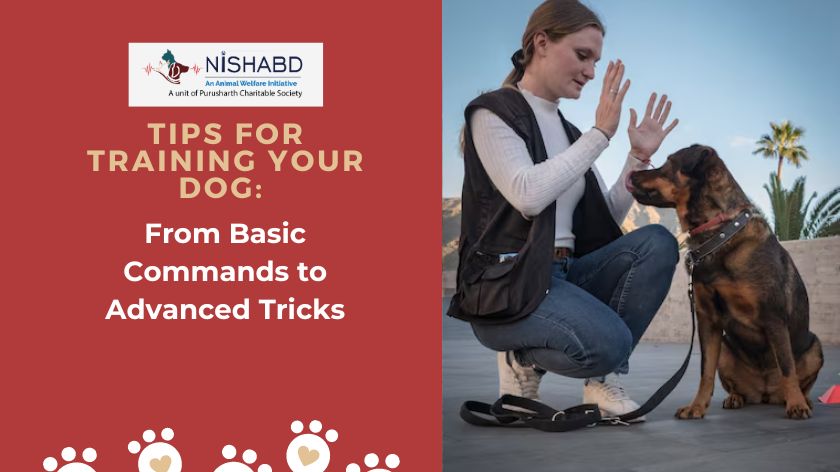Tips for Training Your Dog: From Basic Commands to Advanced Tricks
Making your dog learn basic commands to more advanced tricks is an enjoyable experience that builds your relationship and increases the stimulation of their minds. If you’re educating them to stay and sit or working on agility classes, effective dog training demands patience
as well as consistency and a sense of.
This blog provides practical advice and strategies to help you through each phase of your training to ensure an enjoyable relationship with your dog that is well-behaved. If you’re a brand new pet owner or want to improve your skills in training this guide will assist you to be successful and have fun with your pet.
Understanding Dog Training Basics
- Begin with Positive Reinforcement
- Dog training starts with positive reinforcements, like praise, treats and toys. This helps dogs do the same things that you would like them to master.
- Consistency is Key:
- The consistency of the dog’s training is vital. Make use of the identical commands and rewards over and over to ensure that your dog is aware of what you are expecting from them.
- Patience and Persistence:
- How to train a dog requires patience and persistence. Training takes time and repetition. Be patient with your dog and practice regularly for the best results.
Teaching Basic Commands
- Sit:
- To teach a dog how to sit, place treats close to their face and slowly lift it up above their head. As their head rises and falls, their bottom naturally drops. You can say “sit” as they do so, and then reward them with a treat and praise.
- Stay:
- Begin with your dog in a seated position. Keep your palm towards them and tell them to “stay” while taking a tiny step away. You can reward them for staying stationary, and gradually increase the distance and length of the stay instruction.
- Come:
- To train your dog to come first, they should be walking on leash. Squat down, call their name, followed by “come,” and gently pull the leash. Give them sweets and affection once they get close to you.
- Lie Down:
- Begin with your dog sitting in a posture. Place a treat on the nose of your dog and then lower it down to the floor as they say “down.” Reward them for lying down completely.
Advanced Training Techniques
- Target Training:
- Utilize target-based training methods to lead your dog into certain positions or movements. Reward your dog by touching or following the targets.
- Clicker Training:
- Introduce a clicker to identify desired behaviors immediately, and then follow by a reward. Training dogs with clickers helps them understand specific moments when correct behavior is required.
- Agility Training:
- Agility training is the process of setting obstacles such as tunnels, jumps and weaving poles that challenge your dog both mentally and physically. Begin slowly and reward yourself for progress.
Troubleshooting Common Issues
- Handling Distractions:
- Gradually introduce distractions in training sessions with your dog to help train your dog to remain focused in spite of distractions.
- The treatment of anxiety or fear:
- Make use of gentle reinforcements and a positive attitude to increase trust in your pet’s. Seek out a professional trainer in serious instances.
- Consistency in Training:
- Make sure your family members follow the same methods and commands to ensure that your dog is not confused.
Building a Strong Bond
- Quality Time Together:
- Training sessions for dogs should be fun for both you as well as your dog. They should be fun, entertaining and an opportunity to build a bond.
- Understand Your Dog’s Needs:
- Each dog is different. Discover their habits or fears to customize your dog’s training strategy.
- Celebrate Success:
- Reward and praise your dog for their accomplishments regardless of how small. Positive reinforcement builds the connection between you and your dog.
Conclusion
In the end, effective dog training isn’t just about educating your dog on commands, it’s about building a strong connection based upon trust, communication and respect. Through positive reinforcement and consistent methods to transform your pet into a calm pet with the ability to perform amazing tricks. Remember that training your dog is a process which requires patience and dedication.
Be grateful for every milestone however small, and relish the times of development and learning your dog. With these tips on how to train a dog from basic commands to advanced tricks, you’re equipped to create a happy, obedient, and fulfilled companion. Embrace the journey of dog training—it’s as rewarding for you as it is for them!
Read our Article: Basic Training for Dogs: Building the Foundation of a Lifelong Bond


